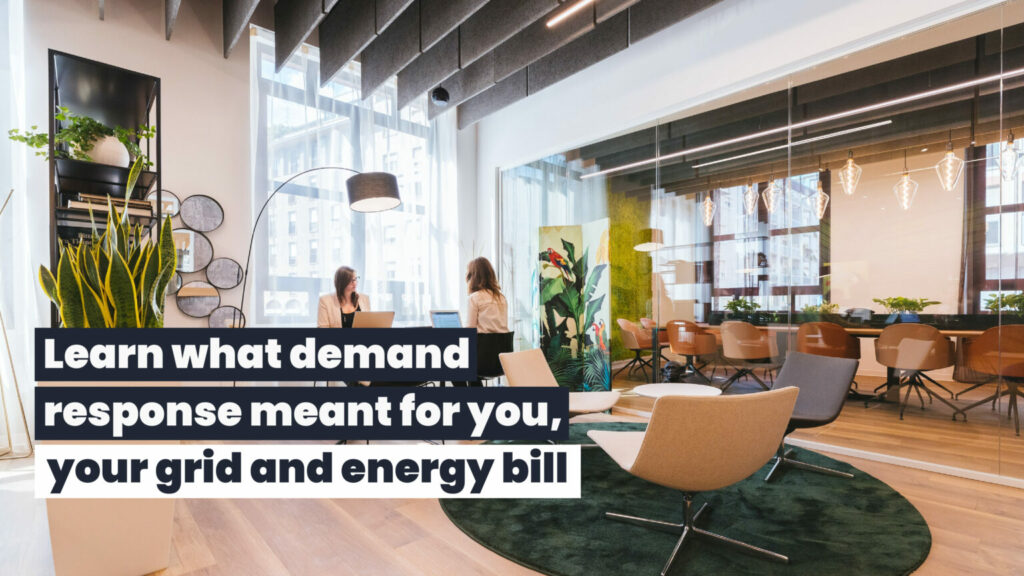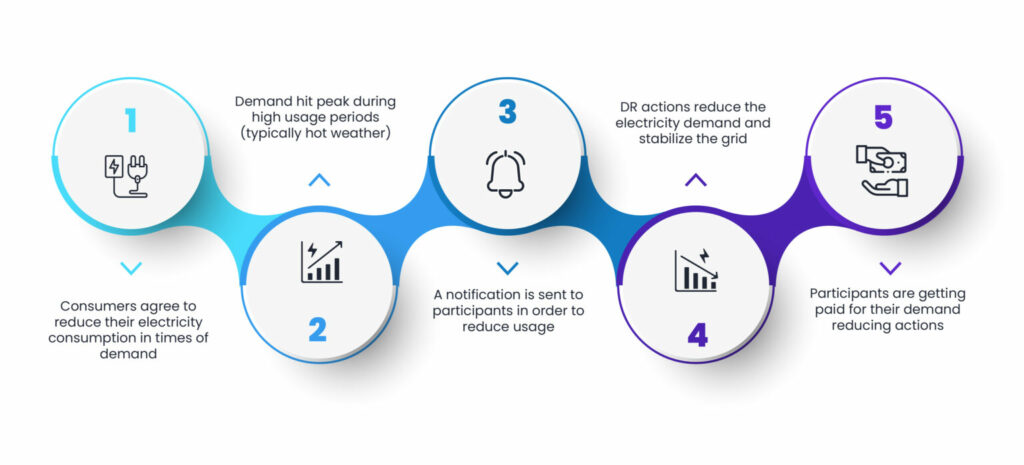Demand Response – the best choice when energy requirements surpass supply

Everybody likes to save on energy bills; surprisingly, being smarter with your energy usage could save you hundreds of dollars every year. In the United States, Demand Response program will help you to lower energy bills and stay energy efficient. Though the technique has been around for a while, it is getting more popular as smart building technologies get advanced.
As a utility customer, it’s important for you to know about Demand Response and how it can save you money on energy bills. This article will give you a complete overview of demand response- from what it is to how commercial enterprises can benefit from it.
This is what we will cover:
- What is Demand Response?
- How does Demand Response work?
- How do businesses benefit from DR?
- Conclusion
What is Demand Response?
Busy working hours or hot summers are more likely to draw more power than usual days. But the interesting thing is that commercial or industrial businesses could earn significant savings by minimizing energy consumption during these heavy draw times.
Demand response is an electricity tariff or program designed to induce lower electricity use, typically at times of high consumption or when grid reliability is at risk.
Commercial, industrial, and residential customers are ideally suited for the demand response programs. Enrolled customers agree to cut down electricity usage in response to high electric demand or peak price.
This is a quick and cost-effective way to reduce the demand for electricity during peak hours instead of generating a larger amount of electricity or building new power plants. The DR program has the potential to help balance supply and demand. If there is a peak in demand, the grid needs to respond.
Want to know how Lumos Controls satisfies demand response? Click here
| Lumos Controls is all about breakthrough innovations. We have updated every minute information about lighting that you should know on our resource page. Click here |
How does demand response work?
A demand response event involves the following steps:

Automated Demand Response
Demand Response technology lets your business temporarily reduce energy use automatically during demand response events. Automated DR uses automation systems to communicate signals from utilities to energy-using devices that causes them to turn off during periods of high demand. When a utility provider anticipates peak demand, it sends an alert to the ADR system, reducing energy use by turning off/dimming lights or by changing temperature, for instance. The process reduces energy consumption during peak periods while ensuring service providers meet the market demand.
How do businesses benefit from DR?
With the fluctuations in transmission, distribution, capacity charges, the future energy market is uncertain. DR programs offer companies, schools, offices, factories, commercial property, and retail malls an opportunity to tackle rising energy costs.
Benefits of Demand Response include:
Reduce electricity costs
By participating in Demand Response, customers will be able to offset energy costs. Since demand response programs eliminate the need for additional electricity generation, building operators reduce energy costs and maximize energy efficiency.
Improved reliability on grid
Reducing electricity when demand is high increase reliability on the grid. Demand response imposes less stress on energy transition and distribution systems, preventing unplanned power outages or blackouts.
Better understanding of energy usage
As electric utility companies use Demand response to reduce or shift energy consumption from peak hours of the day, you will clearly understand energy consumption pattern.
Lower wholesale market prices
Demand response reduces the dependency on costly power plants during peak hours. As the demand for power decreases, wholesale market prices will become lower, resulting in further savings on the electricity bill.
Increased ROI
Customers will get paid for reducing energy usage during times of peak usage.
How demand response saves our planet?
Using less energy means more energy is conserved. Producing and using electrical energy efficiently reduces the need for additional power plants and the amount of pollutants and greenhouse gas generated significantly decreases.
Other environmental benefits of demand response includes:
- Increased energy efficiency
- Renewable energy integration
- Reduced reliance on new power plants
Conclusion
Demand response programs offer business owners a wide range of new opportunities for saving energy bills and striving for a sustainable future. Every industry matters in this challenge. Why not start now?
To learn more about demand response and how it works, contact our expert